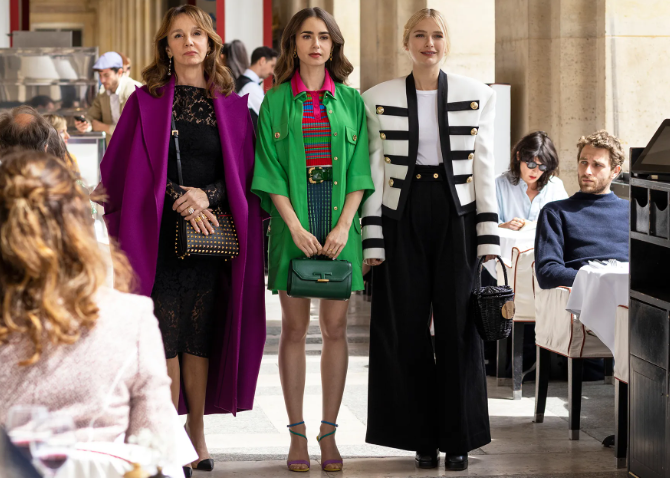Emily in Paris and the role of Fashion Psychology
Emily in paris
and the impact of fashion psychology
Emily in Paris, a popular Netflix series, follows the story of a young Chicago-based marketing executive, Emily Cooper, as she navigates her new life in Paris while working for a luxury marketing firm.
Throughout the show, Emily's love for fashion and personal style is a prominent feature. From her quirky, colorful clothing choices to her constant experimentation with new trends, Emily's fashion sense is a key part of her character development and her journey in Paris.
But what is it about fashion that makes it such a central part of Emily's life and the show as a whole? To understand this, we can look at the psychological effects of fashion and how it influences our sense of identity, confidence, and social connections.
Fashion and Identity
Our clothing choices can say a lot about who we are and how we want to be perceived by others. For Emily, her personal style is a way for her to express her unique personality and individuality, even in a city known for its chic and sophisticated fashion scene; Emily is often seen in bold, colorful outfits that reflect her bubbly and outgoing personality. On the other hand, her boss, Sylvie, is often seen in more formal and classic pieces that convey her sophistication and professionalism.
The show also touches on the way fashion can be used to conform to societal expectations or to stand out as an individual. The character of Mindy, for example, uses fashion as a way to fit in with the more traditional and conservative Parisian society, while Emily often uses fashion to assert her own identity and independence.
Fashion can also serve as a way to communicate our values, beliefs, and cultural background. For example, Emily's love for vintage and thrift store finds reflects her interest in sustainability and her desire to stand out from the crowd.
Emily is initially resistant to the fashion-forward culture of Paris, but as she becomes more immersed in it, she begins to embrace her own personal style and use fashion as a means of self-expression.
This concept is supported by research in fashion psychology, which explores the ways in which clothing and appearance can influence our thoughts, feelings, and behavior. According to the psychologist Karen Pine, fashion can serve as a form of nonverbal communication, conveying information about a person's identity, values, and social status to others.
Fashion and Confidence
Fashion can also play a role in how we feel about ourselves and our confidence levels. When we feel good about the way we look, it can boost our self-esteem and make us feel more confident in social situations.
For Emily, her love of fashion is tied to her self-confidence. She is not afraid to take risks with her style and is unapologetic about her fashion choices, even if they may not always be conventional or popular. This sense of self-assurance helps her navigate the challenges of living in a new city and fitting in with a new work environment.
Fashion and Social Connections
Fashion can also serve as a way to connect with others and form social bonds. Whether it's through shared interests in certain brands or styles, fashion can bring people together and create a sense of community.
In Emily in Paris, fashion plays a role in bringing Emily closer to her coworkers and friends in the city. From bonding over their shared love of fashion to sharing tips and tricks for finding the best boutiques and markets, Emily's interest in fashion helps her build meaningful relationships in her new home.
Emily in Paris highlights the many ways in which fashion can influence our identity, confidence, and social connections. Whether we're seeking self-expression, a boost in self-esteem, or a way to connect with others, fashion can play a significant role in our lives.

